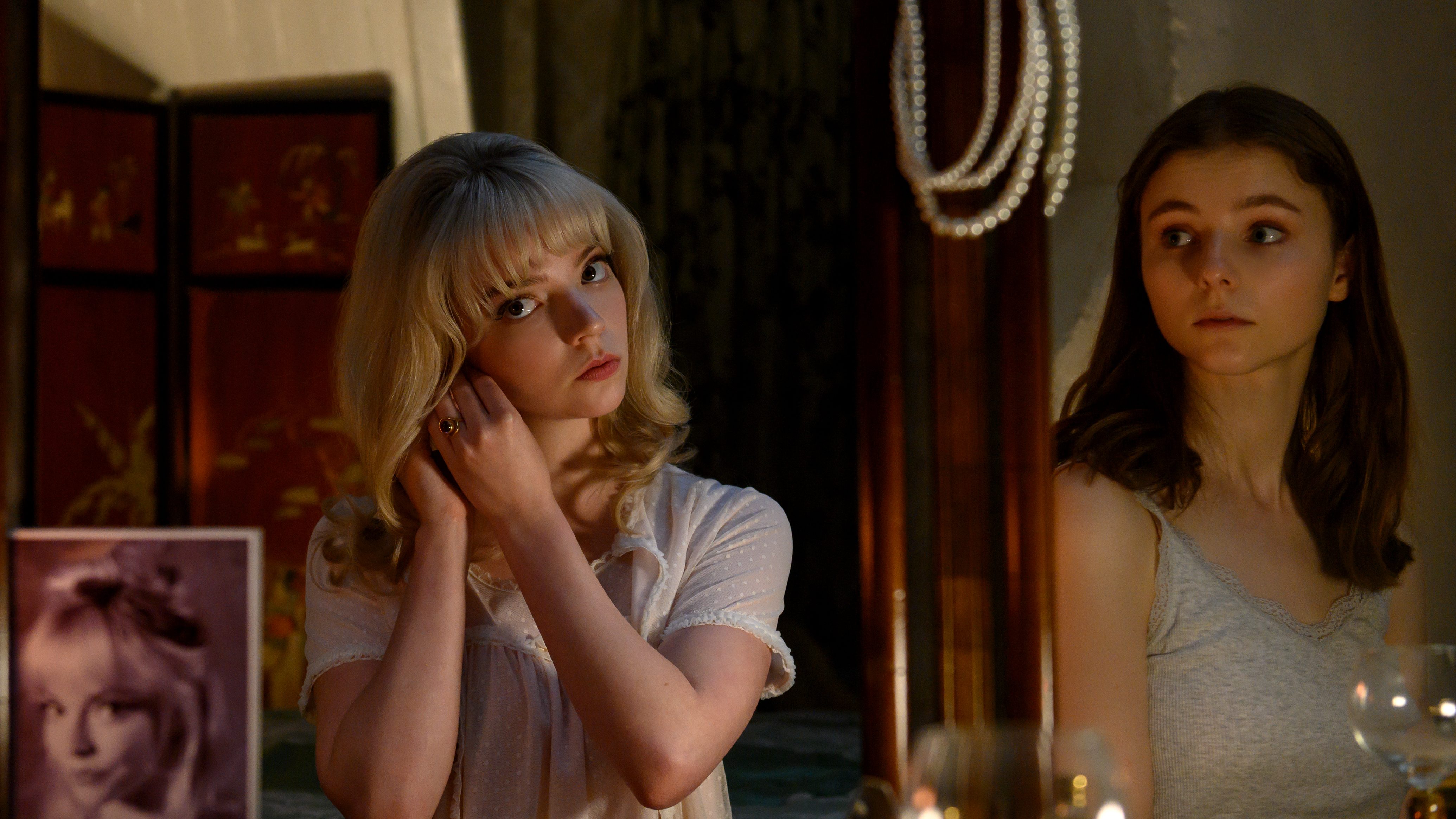

Last Night in Soho, director Edgar Wright’s new supernatural thriller, opens with a scene of unrestrained girlish delight: young Eloise (Thomasin McKenzie) prances around her bedroom in Cornwall wearing a gown she’s presumably made herself, lip-syncing to one of the 1960s pop records she loves. The character is a sheltered naif, an orphan raised by her doting grandmother, and MacKenzie is thoroughly lovable in the role.
But Wright’s film is, in part, about innocence lost, and pretty soon, Eloise is off to the big bad city, like a lamb to the slaughter. She’s a babe in the woods, wide eyed and full of both hope and trepidation, listening to her cozily retro albums and wearing her homespun threads amongst her far more worldly classmates at a London design school where she’s studying fashion. Soon those mean girls have her fleeing the dorms for a Soho bedsit in the home of Ms. Collins (the legendary Diana Rigg).
Along with her fixation on the 1960s, Eloise also possesses something of a psychic talent. She sees dead people, and begins to dream of a previous inhabitant of her flat, a talented young singer named Sandy (Anya Taylor-Joy) who may or may not have met an ignominious end in 1960s London. At first, Eloise’s visions of Sandy’s life give her the confidence she needs to blossom. But as she learns more about how the city—and a malevolent “manager” (Matt Smith, as charmingly louche as ever)—chewed up and spit out Sandy, the dreams become nightmarish and begin to invade her waking life as well.
Last Night in Soho had me thinking about a conversation I had years ago about the limits of nostalgia. I was having coffee with a trio of fashion bloggers—all cis, straight, white—who were talking about the various historical periods they would have loved to experience. When they turned to me, I had to admit that as a queer person, I didn’t see the appeal of any era other than the present; the past is a danger zone full of repression and ignorance. For Eloise, the present is full of perceived danger—a lecherous cab driver; social rejection—so she initially sees Sandy’s swingin’ ’60s London as a glamorous refuge. But her eyes are quickly opened to the exploitation and sexual violence to which Sandy was subjected, and which literally haunts Eloise in the present.
Wright’s depiction of ’60s London does indeed dazzle, and Taylor-Joy is in exquisite form here as a vamp who keeps us guessing to the very end. As the film shifts from dream to nightmare, Wright delivers some truly frightening imagery that is guaranteed to stick with you after the credits roll. Despite a few predictable twists and red herrings, the film still manages to affectingly subvert expectations. No one is quite who you think they are, and even as the film seems to be veering wildly off course, Wright manages to retain control of his prickly themes. And it must be said that in a film full of captivating titans (Terrence Stamp) and ingenues, Rigg is still a powerful presence. Her performance is made even more impressive by the knowledge that it was her last. I suppose that’s cause for a bit of nostalgia.














